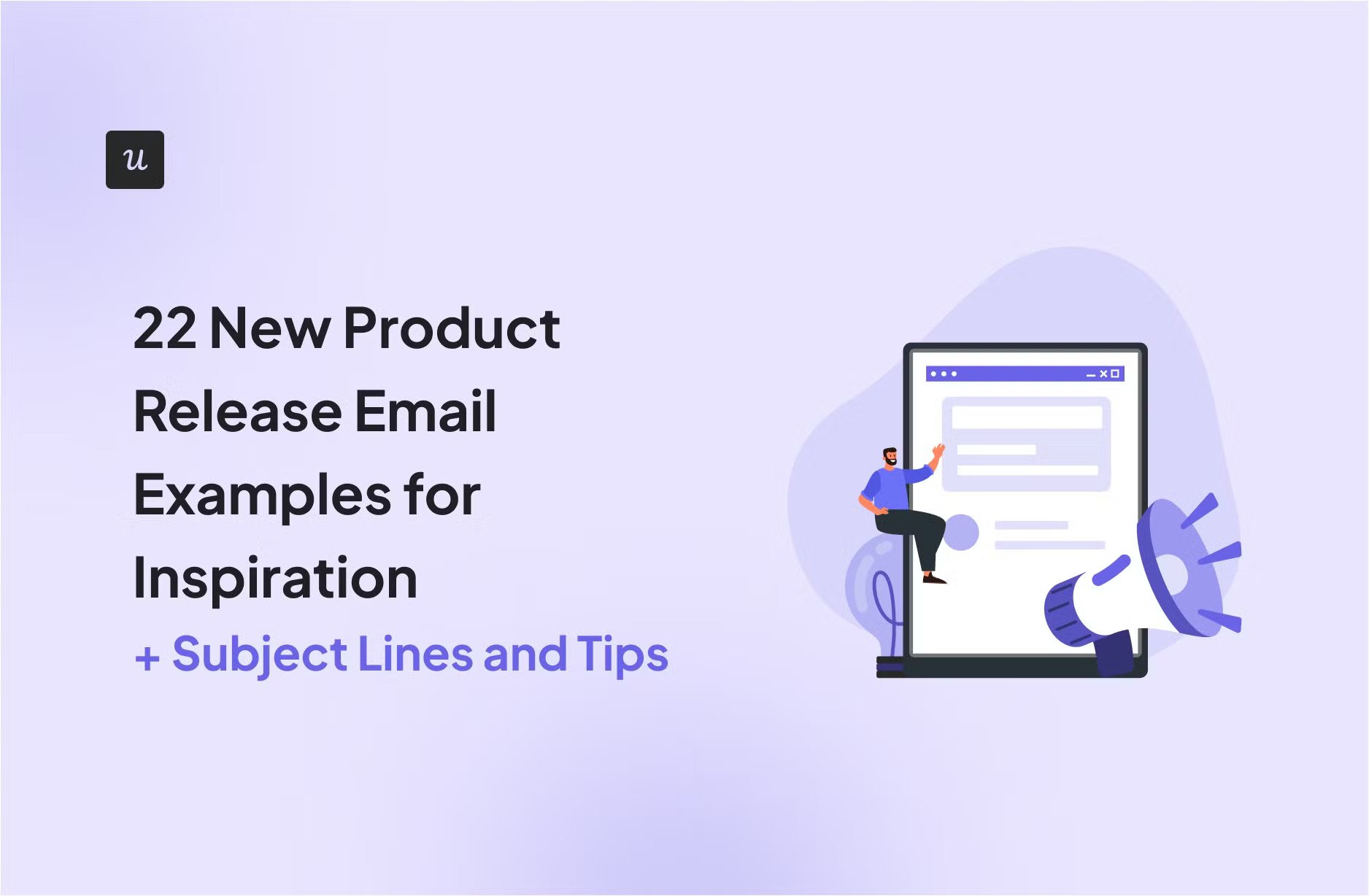
22 New Product Release Email Examples for Inspiration (+Subject Lines and Tips)
Can new product release emails influence your product adoption rates? Why are product release emails important for a successful product launch strategy?
If you’re looking for answers to the above questions, we’ve got you covered.
This article covers the why and how behind using emails during new product launch campaigns, along with a curated list of new product launch announcement emails for inspiration.
What is the primary goal of your next new product release email campaign?
How do you currently target your product announcements?
How do you measure the success of your new product release emails?
Stop sending new product release emails that get ignored.
Drive feature adoption and re-engage users with perfectly timed, segmented in-app announcements and tours. See how Userpilot can help you connect with the right users at the right moment.
Try Userpilot Now
See Why 1,000+ Teams Choose Userpilot

What is a new product release email?
A new product release email is a marketing tool used by SaaS companies to announce new products, a new version, or new features.
They inform current and potential customers about the new offering, when it’s going to be available, and, most importantly, highlight their benefits.
Why are new product release emails important?
New product release emails are crucial for SaaS businesses for a number of reasons:
- Generate buzz around the launch: Pre-launch product emails are excellent for building anticipation and excitement around upcoming features or products.
- Drive early engagement and conversions: Launch emails allow you to quickly notify users when a product is available and prompt them to take immediate action—whether it’s pre-ordering, joining a beta program, or exploring new features.
- Increase product adoption: A well-crafted product launch email sequence can help you increase your adoption rates by showcasing its value, highlighting use cases, and not letting users forget about the new product.
- Re-engage inactive or churned users: New product release emails can help you re-engage users who may have gone inactive or churned. If your new feature or product update addresses a pain point or missing functionality that caused users to churn, a well-crafted email can bring them back into the fold.
Different types of product release emails
Product release email can be considered an umbrella term for a few types of different emails. Let’s have a closer look at the four main ones.
Product release emails
As the name suggests, product release emails usually include product release notes on top of the announcement. These are part of bigger product launches and include more details than a simple feature release announcement email.
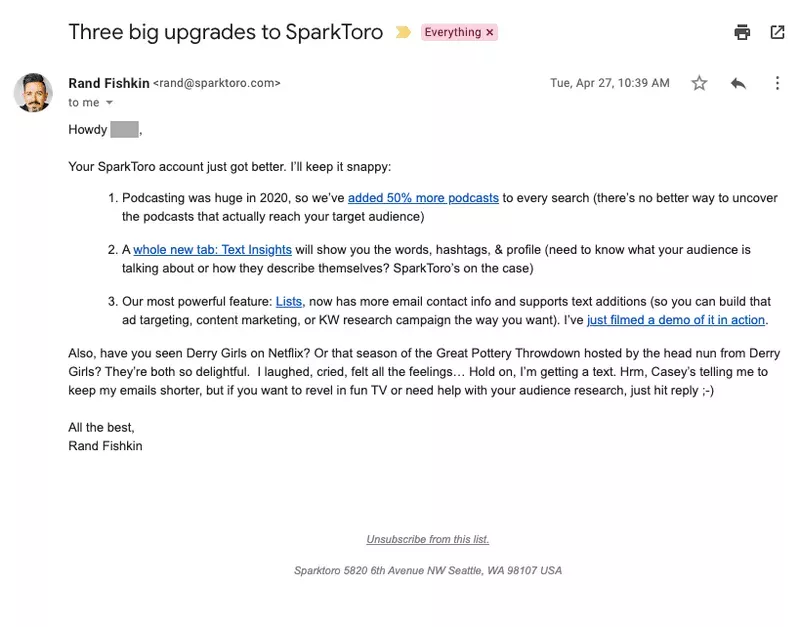
New feature announcement emails
Since improving your product and adding new features is a continuous process, feature announcements are similar to a product launch email, only that they announce the availability of a new feature.
Check out the example below from Slideshare, where it introduces its new Clipping functionality.
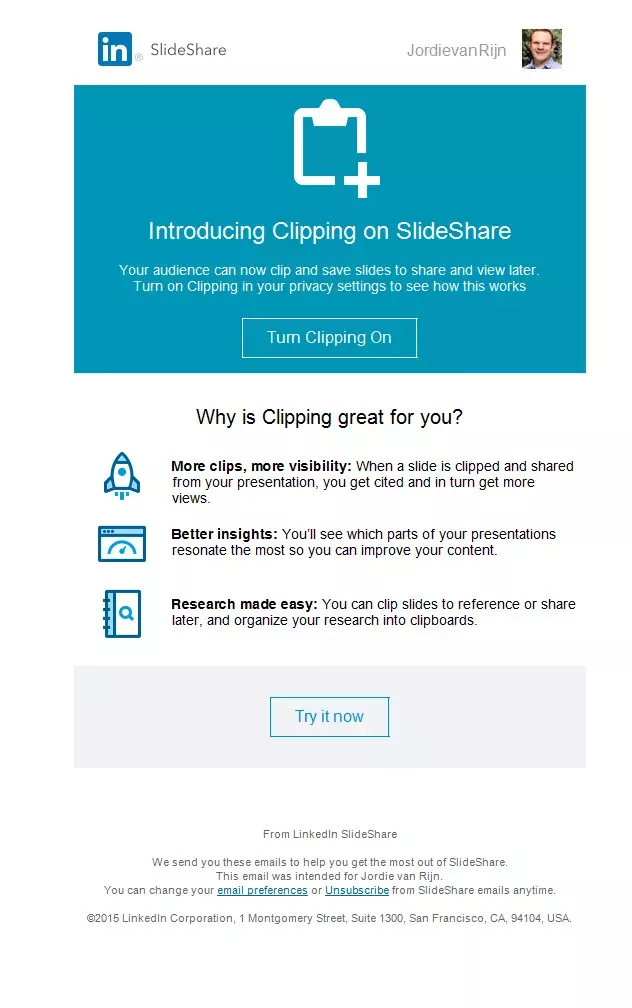
Pre-order release emails
An effective product launch has more than just one email. Here is where the pre-order release emails come in.
These emails are usually a part of a product launch email sequence. While the product is not available yet, they offer them a chance to secure access as soon as it’s launched, possibly before other ‘ordinary’ users.
Such emails help you build the hype around your product and may help you get early commitment from the users.
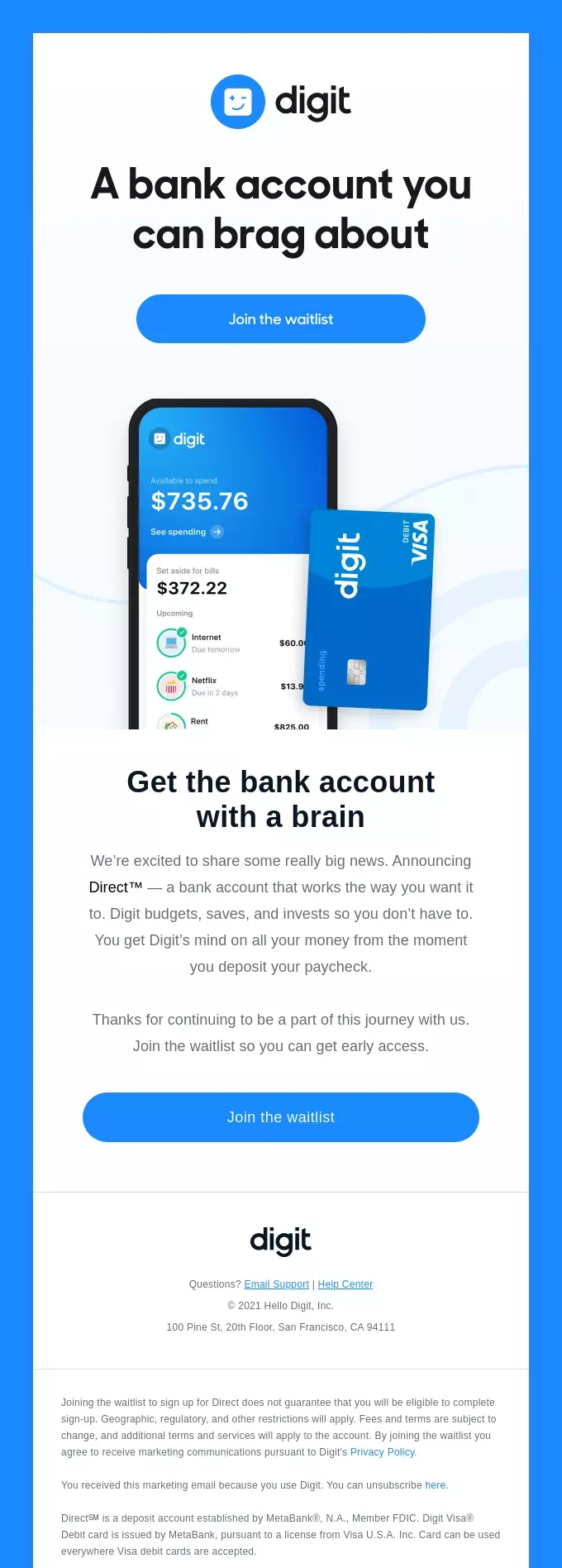
Future sales product release emails
Future sales emails offer a one-time discount to users who want to benefit from a new feature or product enhancement that will only be available on premium subscriptions.
An example of that would be Squarespace’s email with a limited-time offer for an additional feature.
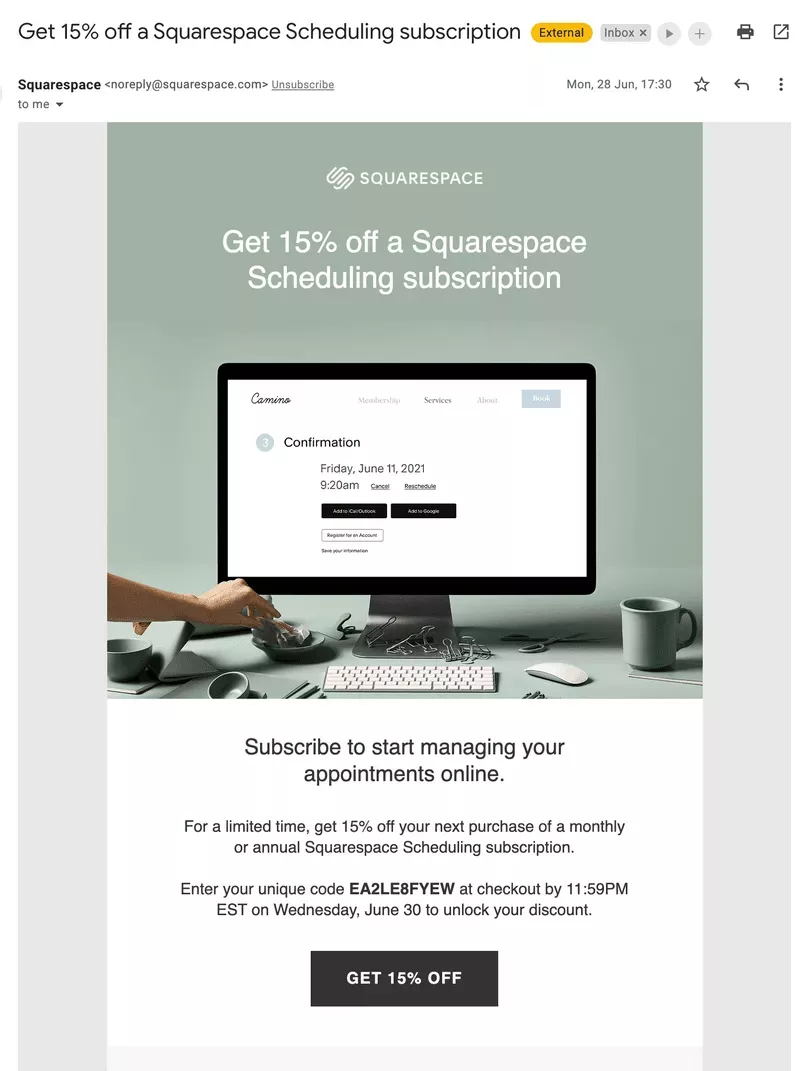
20 effective product launch email subject lines to leverage
A well-crafted subject line can be the difference between your email being opened or ignored.
The following are 20 real examples of product launch email subject lines from a variety of industries you can use for inspiration.
- HERO7 is here. Pre-order yours.
- Introducing Grilli Kiosk!
- Surprise—Her First $100K Merch is HERE! 🎉
- Our Fall Fragrance is selling out
- The new iPad Pro. Supercharged by the Apple M1 chip.
- Introducing YouTube Red: another way to YouTube
- 🎉New Shirt + 48 hours only
- Unlock your best hair days
- 48 hours to close of pre-sale: Get 15% off now!
- New year. New gear.
- Want my new mobile presets for free?
- Your favorite tool just got an update!
- In 24 hours.” (CW&T – Consumer Electronics)
- Say Hello to New ProdPad: You Asked, We Listened
- Introducing Placeit by Envato 🎉
- Ready for magic?
- The long wait is over with The Legend of Zelda: Breath of the Wild available today
- Introducing the Ultimate Game-Changer. Are You Ready?
- NEW Arcade Line: The 60s!
- Tailored to You: The Future of Personalized Mobility
22 best product launch email examples
We’ve hand-picked 22 excellent examples that will help you design your own product launch emails.
1. Userpilot
This Userpilot launch email demonstrates how a clean design paired with sharp messaging can truly drive engagement.
The layout is minimal yet effective—ample white space, bold headings, and emojis ensure high readability without overwhelming the viewer.
The best part?
Bullet points that neatly break down the core benefits and use cases and allow readers to quickly grasp the value of the new feature (Paths). A screenshot of the feature in action, along with a real-world example further clarifies how users can immediately start benefiting from the functionality.
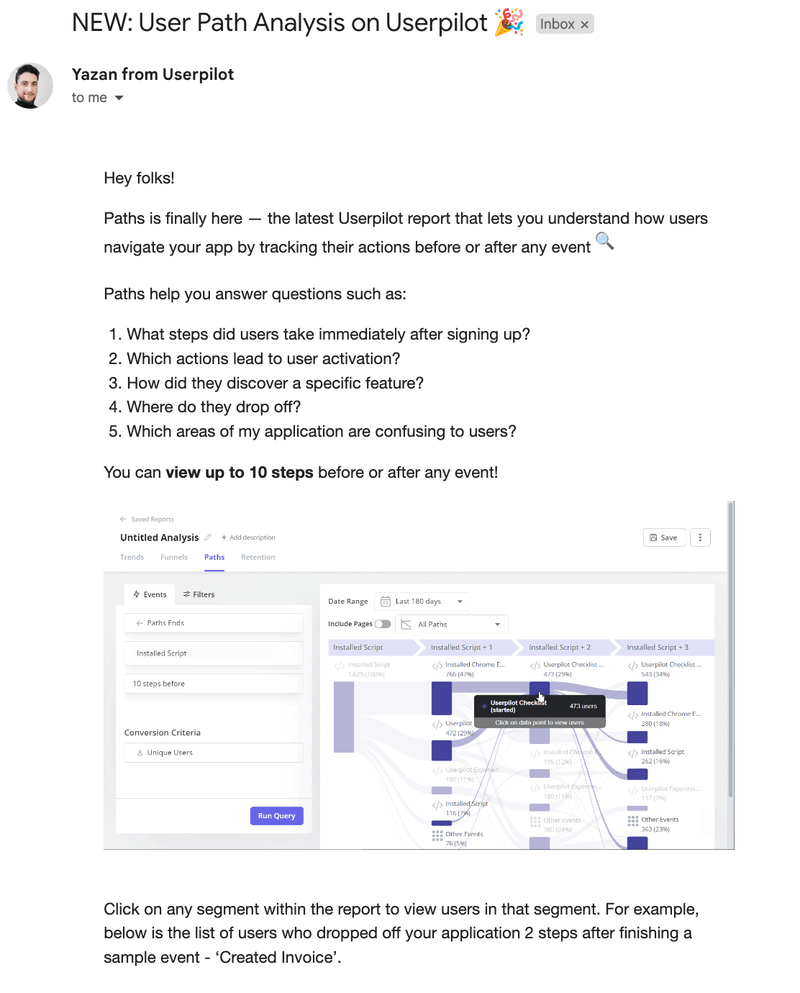
2. Airtable
This launch email from Airtable introduces their new AI-powered tool, Cobuilder, in a clean and straightforward way.
The headline, “The future is no code,” grabs attention, while the layout ensures the message is easy to follow.
Each section is clearly defined, with short descriptions explaining the key features and benefits of the product. The visuals, including screenshots of Cobuilder, add context without cluttering the email.
With clear calls to action like “Learn more” and “Watch on-demand,” Airtable encourages recipients to explore the new tool further, making the email both informative and actionable.

3. Semrush
This launch email from SEMrush is an excellent example of how to captivate your audience with visually engaging content and clear messaging.
The bold purple color scheme immediately draws readers’ attention and reinforces the brand’s identity.
The opening line, “What’s New,” clearly communicates the purpose of the email – to bring users up to date with new features.
The copy is clear and concise, highlighting the key benefits of SEMrush’s new features. And by using icons and bullet points, the email breaks down the value proposition into digestible parts.

4. Canva
This product launch email example from Canva is a masterclass in building anticipation.
The bold headline, “Don’t miss out on magic,” immediately grabs the reader’s attention and creates curiosity about what’s coming.
The copy is short and concise, teasing the arrival of new AI-powered features, while the call-to-action button invites them to take the next step with a clear “Add to Calendar.”
Visually, the email leans on vibrant colors and minimalistic design, which combine Canva’s creative brand identity and the promise of innovation.
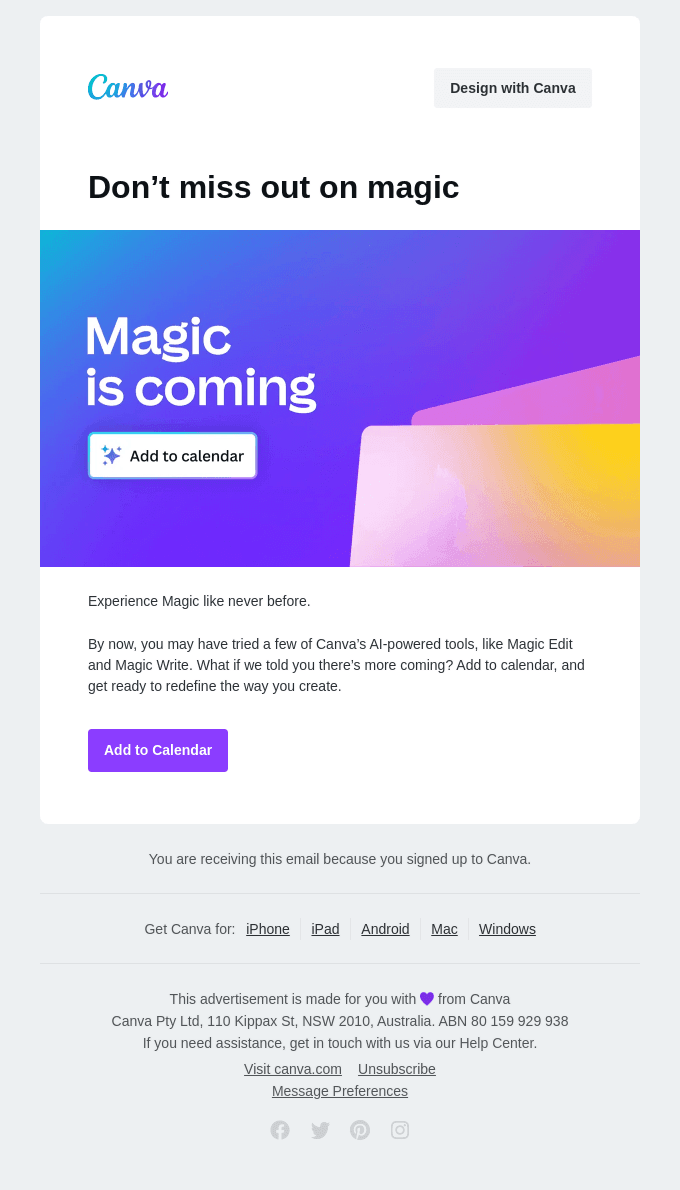
5. Elgato
This product launch email from Elgato leverages both scarcity to capture attention and drive action: The “LIMITED DROP” banner at the top creates urgency, encouraging recipients to act before the exclusive products are gone.
The email consists of two main parts, both focusing on the collaboration with Discord. The first one is all about the custom Wumpus-themed hardware, and the other is about the Discord plugin update.
When it comes to visual design, the email is cohesive and simple, with bold colors and clear calls to action like “Buy” and “Download Discord plugin.”

6. ActiveCampaign
This email from ActiveCampaign is an excellent example of how to effectively introduce new functionality and drive user engagement.
The bold headline immediately communicates the value of the new feature.
This is followed by a screenshot illustrating how the feature works.
Each section is supported by bulleted lists that concisely explain the feature benefits for both the user and the business, which makes the content skimmable. The call-to-action is prominent and clear—“See the Preference Center in action”—inviting recipients to explore the feature directly.
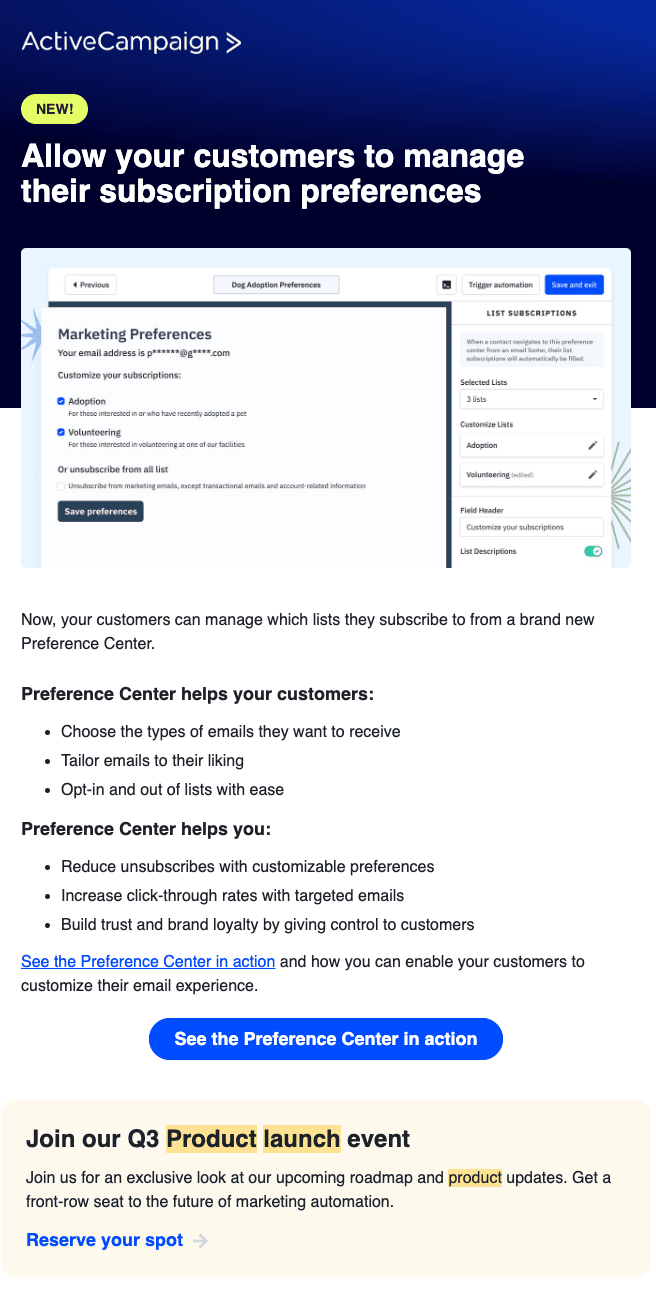
7. WeTransfer
This product launch email introduces WeTransfer’s new app, Collect, in a way that emphasizes simplicity and creativity.
The imagery complements the app’s core feature: the ability to easily gather and organize digital content like pictures, links, and music.
The email then highlights the value the app offers to visual thinkers who struggle with disorganized content.
A clear call-to-action CTA, “Tell me more,” leads users to a detailed page, which provides a seamless transition from interest to exploration.

8. Miro and Zoom integration
This follow-up email from Miro efficiently reminds users of a new integration with Zoom.
The subject line, “Improve workflows with this new integration”, immediately highlights the key benefit, so that users understand the value upfront.
The email’s visual design is simple but effective.
It includes a clear screenshot showing the Zoom integration in action. This helps recipients immediately understand how this new feature can be applied to their workflows.
The copy is concise, emphasizing the ease of collaboration without app switching.
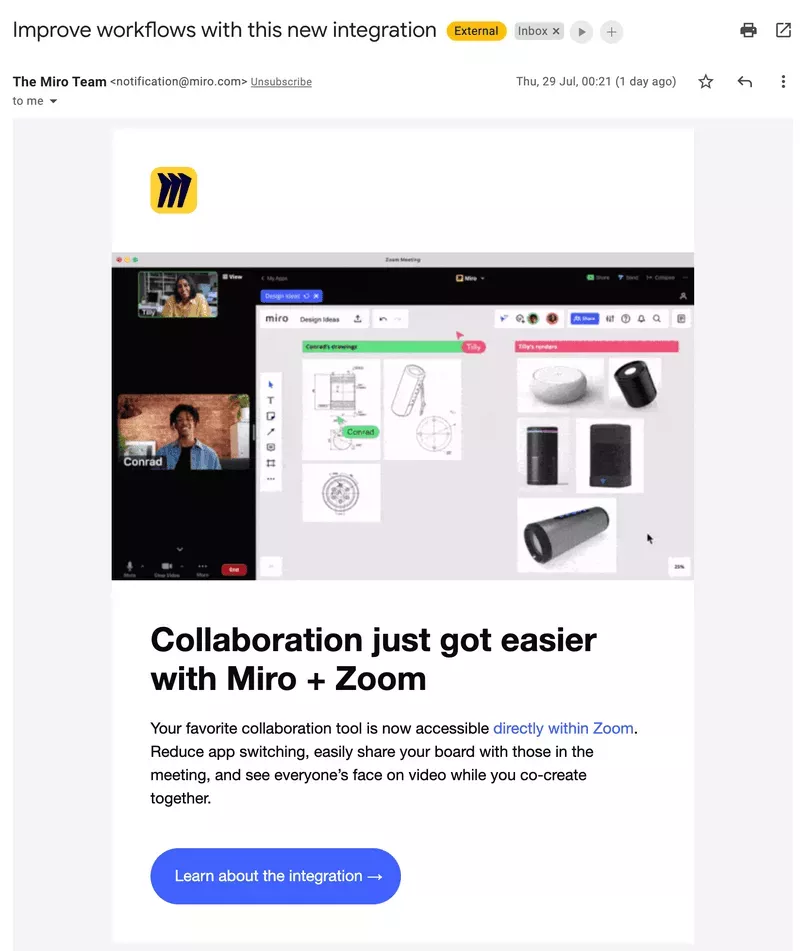
9. Mailchimp
Mailchimp’s beta launch email for its new website builder provides users with an exclusive opportunity to try the feature early.
The headline makes it clear that this is a special access offer, while the body focuses on the value Mailchimp brings to small businesses by their main challenge: marketing their business.
All the details of the benefits are outlined in simple bullet points, making the email easy to scan and ensuring users understand what’s being offered.
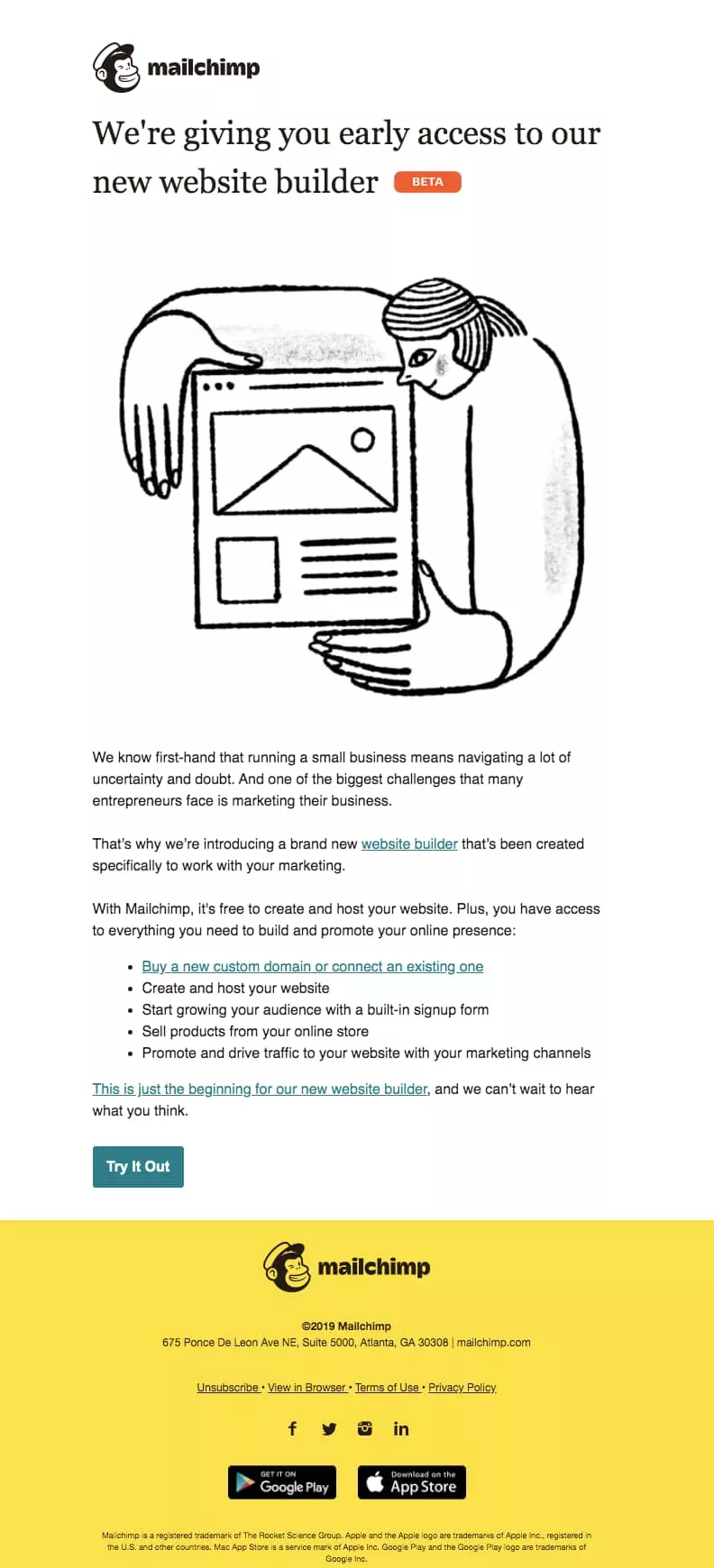
10. Hootsuite
Hootsuite’s product update email highlights new Facebook management features.
The list of new functionalities is concise, making it easy for readers to quickly understand what’s been improved.
The email is customer-focused, offering a live event where users can see the updates in action. The call-to-action, “Reserve your spot today!” adds a sense of urgency.
What stands out most in the email is the lead-in sentence, “You spoke and we listened,” which acknowledges the importance of customer feedback for Hootsuite.
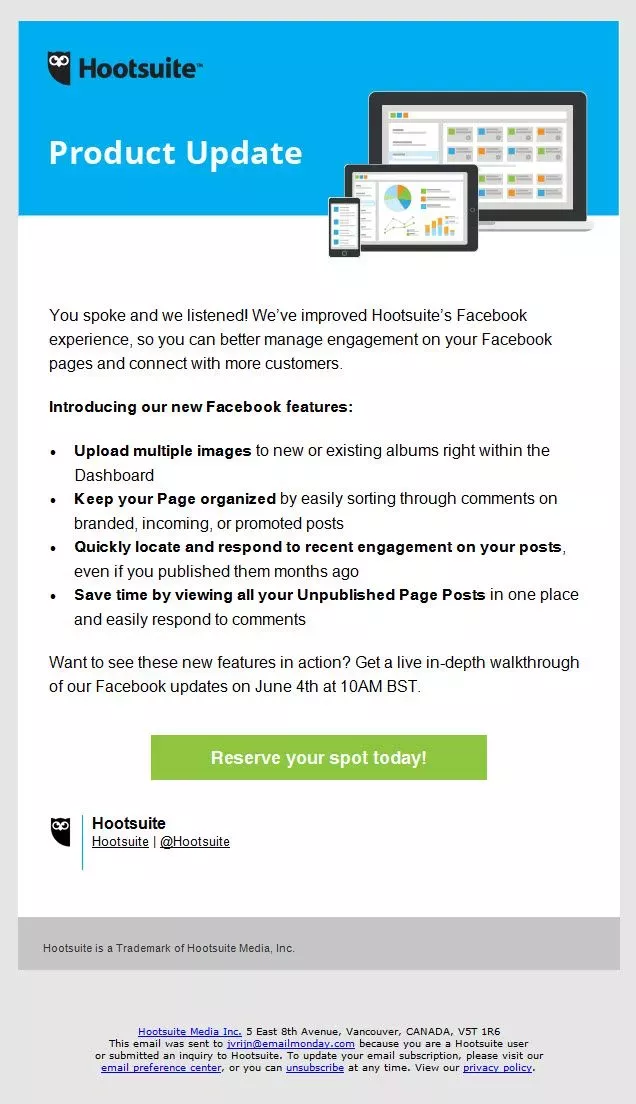
11. Figma
Figma announced their new tool, FigJam, in an email that includes content created with the tool itself.
What better way to showcase the new product in action?
The copy is straightforward and concise. It provides a brief overview of the tool’s purpose—to ideate and brainstorm—and each feature is illustrated with examples of how teams can use it in real life.
And did you notice the heading, “All work and no play?”
The strikethrough reinforces the idea that FigJam is both functional and fun.
Finally, the email encourages readers to learn more about FigJam in the blog post and attend a webinar with a well-placed CTA, “Save your spot here.”

12. Grammarly
This feature release email from Grammarly effectively combines both visuals and concise copy to inform users about the new text styling features available in the Grammarly Editor.
The email starts with a bright, engaging graphic that showcases the different formatting options, immediately drawing the recipient’s attention to the new toolbar.
The headline, “Write Your Text in Style,” is a clever wordplay that sets the tone for the new feature’s introduction, while the copy clearly explains what the update includes.
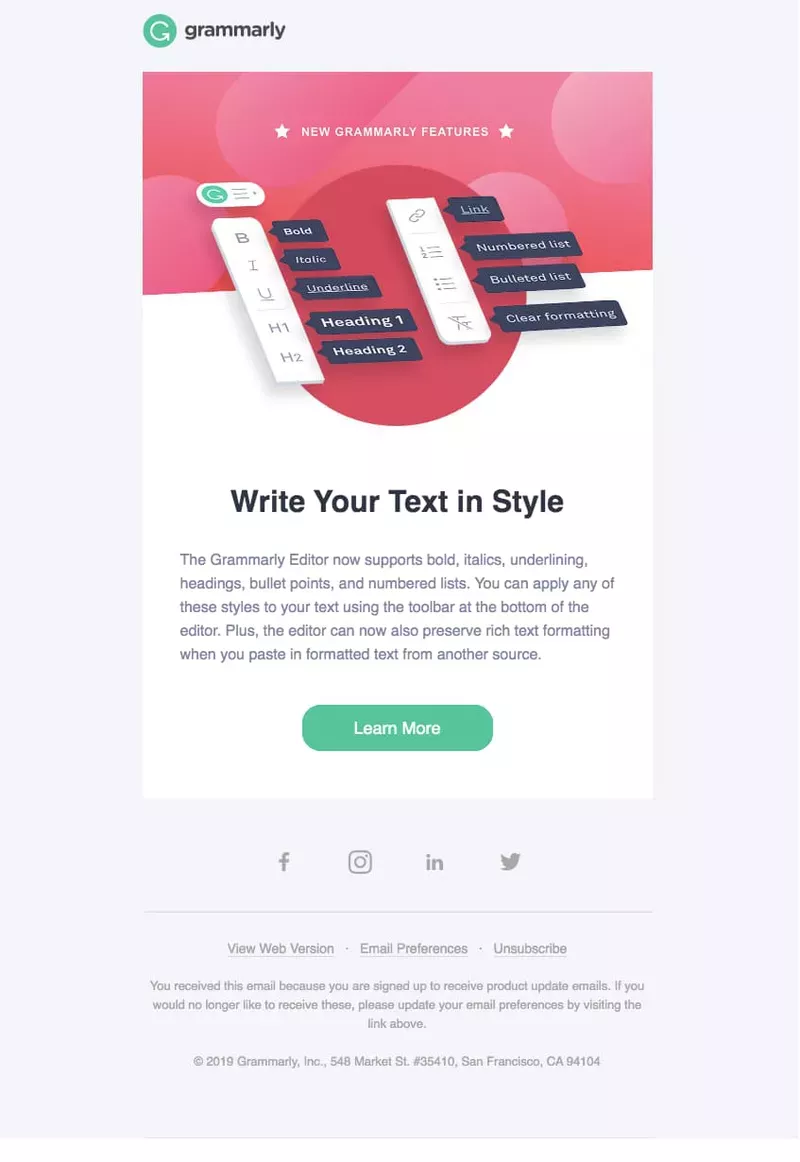
13. Doit
This beta launch email from Doit.io is a strong example of a user-centric product introduction.
It informs the user about the new features added since the initial launch. This is a clear signal to the user that the product is constantly evolving.
The email layout is clean and features a helpful screenshot of the product update, offering a quick visual preview.
The call-to-action (CTA) invites the recipient to create a free account and provide feedback, which places the user as a key part of the development process.
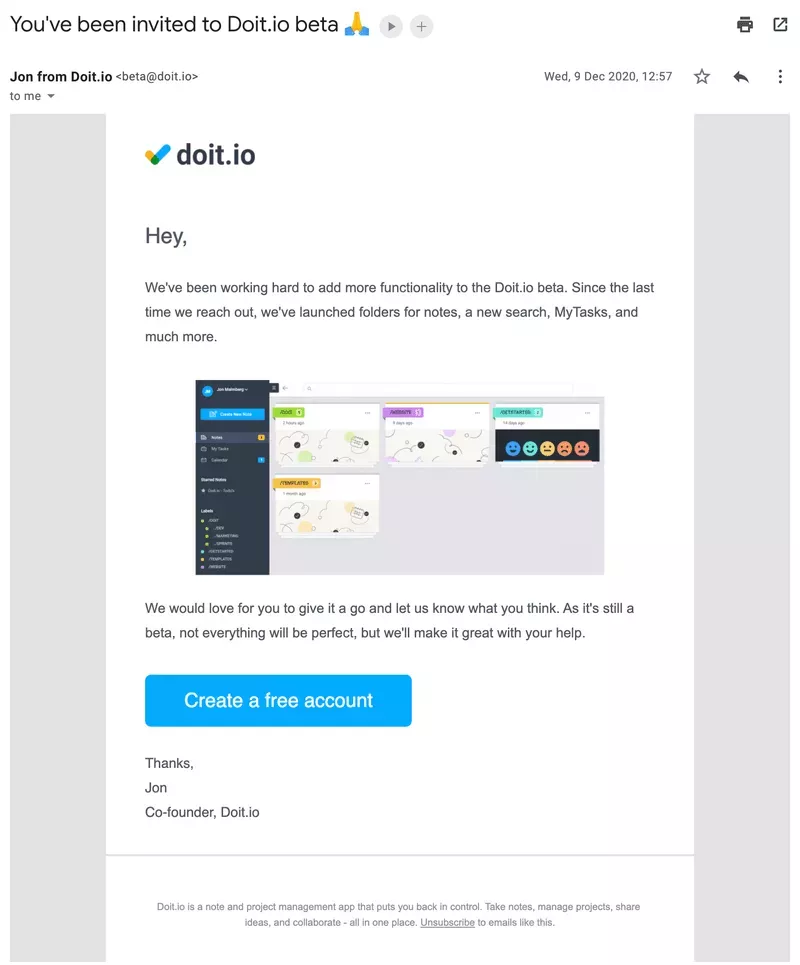
14. Designmodo
This product launch email from Designmodo introducing its new tool, Postcards, showcases the product’s core functionality by using the tool itself to create the email.
The email is visually striking thanks to a clean, modern design that users can produce with Postcards.
The copy is concise and delivers the essential message—Postcards allows users to easily create beautiful, responsive emails by dragging and dropping modules.
It doesn’t overwhelm the reader with details, though, but directs them to a presentation for further exploration.
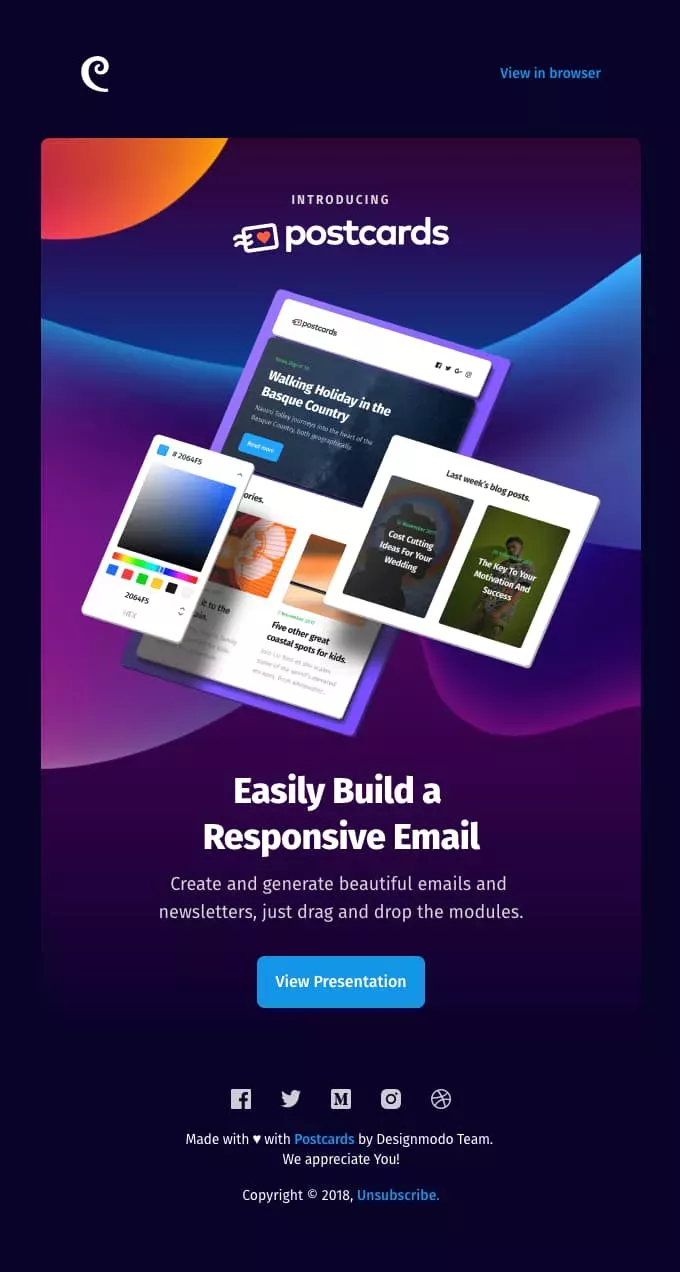
15. Loom
This Loom newsletter combines feature announcements with user education.
The subject line hints at key features like “Notification Center” and “Instant Editing,” drawing the reader in.
Each feature is clearly explained, with a call to action inviting the reader to learn more or manage their settings.
A great touch is the “Tip of the Month” section, which helps users maximize their usage of existing features, such as Picture-in-Picture mode.
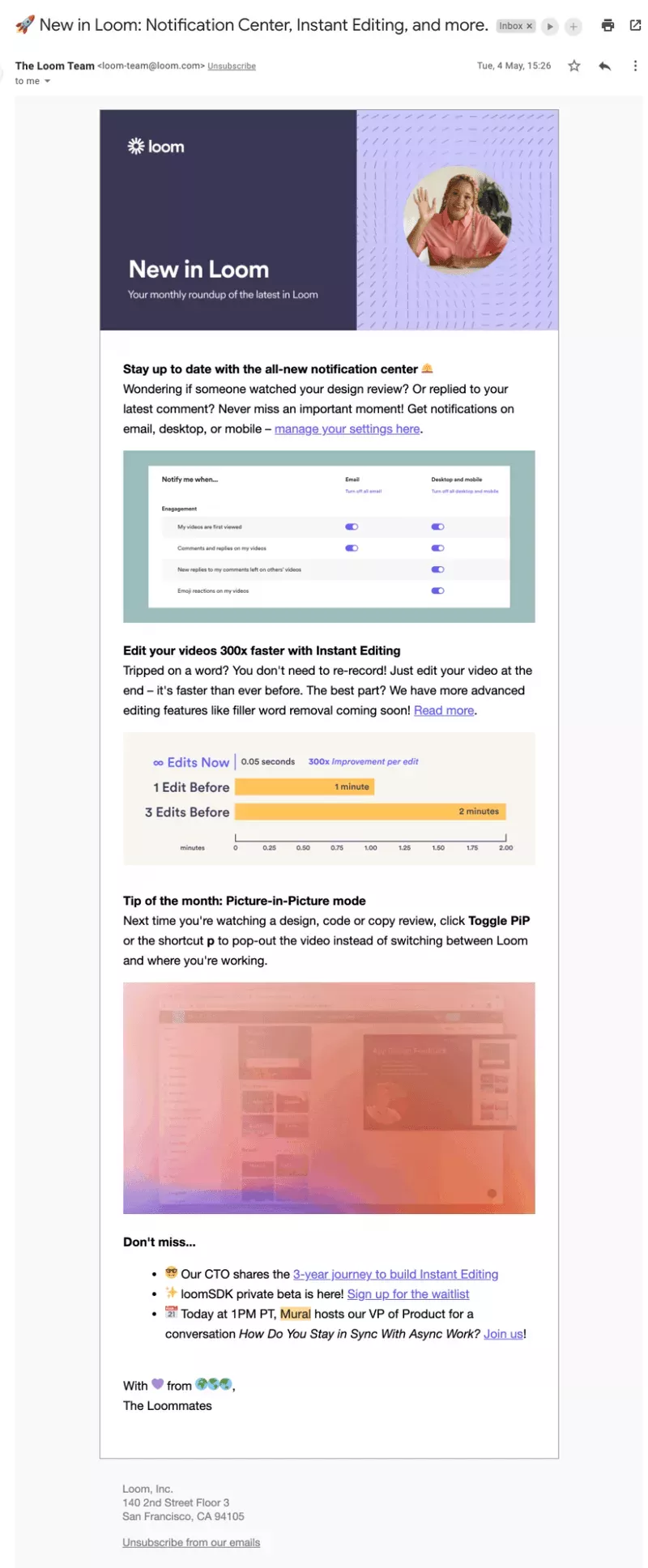
16. Farewill
Farewill’s launch email for their new telephone service is a great example of how to approach sensitive topics.
Right from the start, it identifies a gap in the service—some users may not prefer the online will-writing platform. That’s why Farewill offers a new telephone option to accommodate those needing it.
The email is simple, and the call-to-action—”Book a callback”—makes it easy for users to take the next step without any friction.
Plus, they’ve included a customer testimonial, which makes the whole offer feel more credible and reliable.
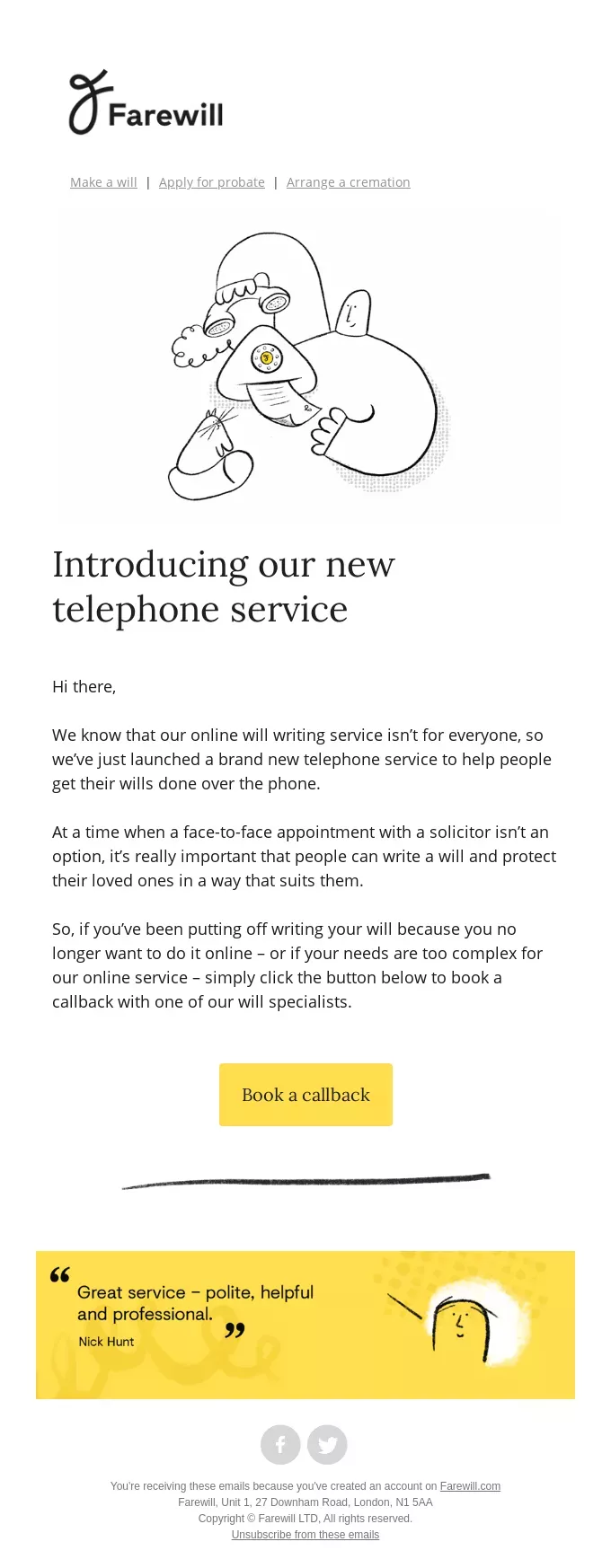
17. Havenly
Havenly’s teaser email is a textbook example of how to build anticipation without giving much away.
It opens with a clear, bold CTA: “Keep your eyes open, and your inbox refreshed.” This instantly captivates readers and makes them curious about what’s coming.
The rest of the email continues to create suspense with minimal details, simply stating, “Next week, we’re launching something new that we know you’ll love.”
The combination of mystery and assurance makes readers eager to see what’s next, setting the stage for the actual product launch.
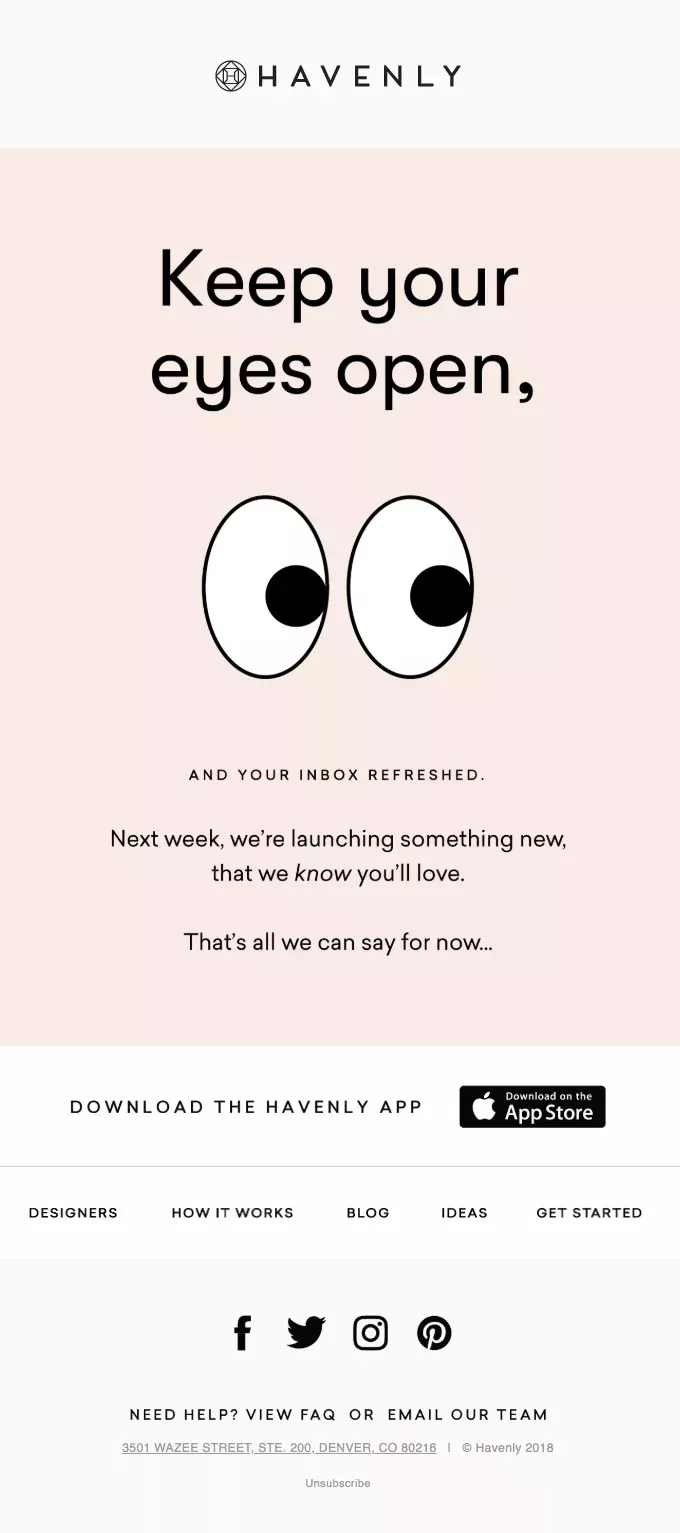
18. InVision
InVision’s product launch email for Craft Freehand divides information into two clear sections.
The first section highlights the product with a bold introduction and a screenshot demonstrating how Craft Freehand allows teams to collaborate visually on design projects. This gives users a clear picture of the product in action.
In the second section, the email breaks down the features, explaining the value of Craft Freehand for collaborative design workflows.
Both sections include a strong call-to-action, guiding users to explore the product.

19. ProductLed Summit
The ProductLed Summit invitation email is designed to create urgency and exclusivity through its early bird pricing offer.
The crossed-out price and discount instantly grab attention, while the list of benefits highlights the value attendees will receive.
By mentioning well-known PLG experts and brands, the email builds credibility and generates excitement.
Finally, the friendly, conversational tone helps readers connect with the sender, while multiple CTAs (like “grab your ticket now”) reinforce the urgency and nudge recipients to take action.
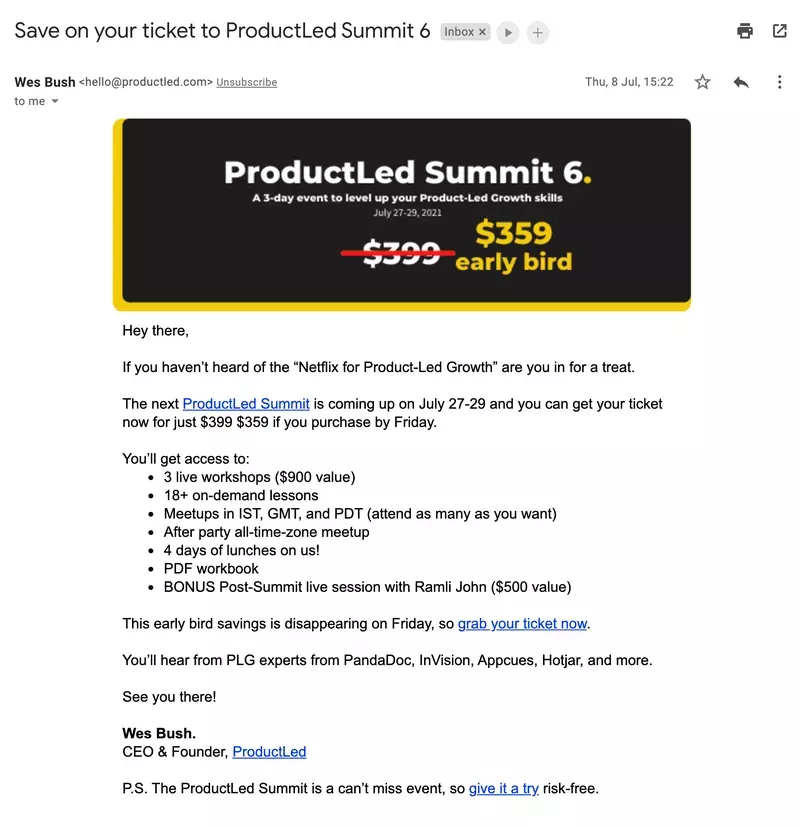
20. Blissfully
This product launch email from Blissfully introduces a new version of their existing product, Blissfully 2.0, by sharing the evolution of the platform.
The email starts with a personal message from the co-founders, explaining the challenges SaaS companies face and how Blissfully addresses these issues.
The body of the email highlights key features of the new platform in a concise list.
This combination of a personal narrative, a clear breakdown of features, and engaging multimedia elements encourage readers to explore the overhauled platform.
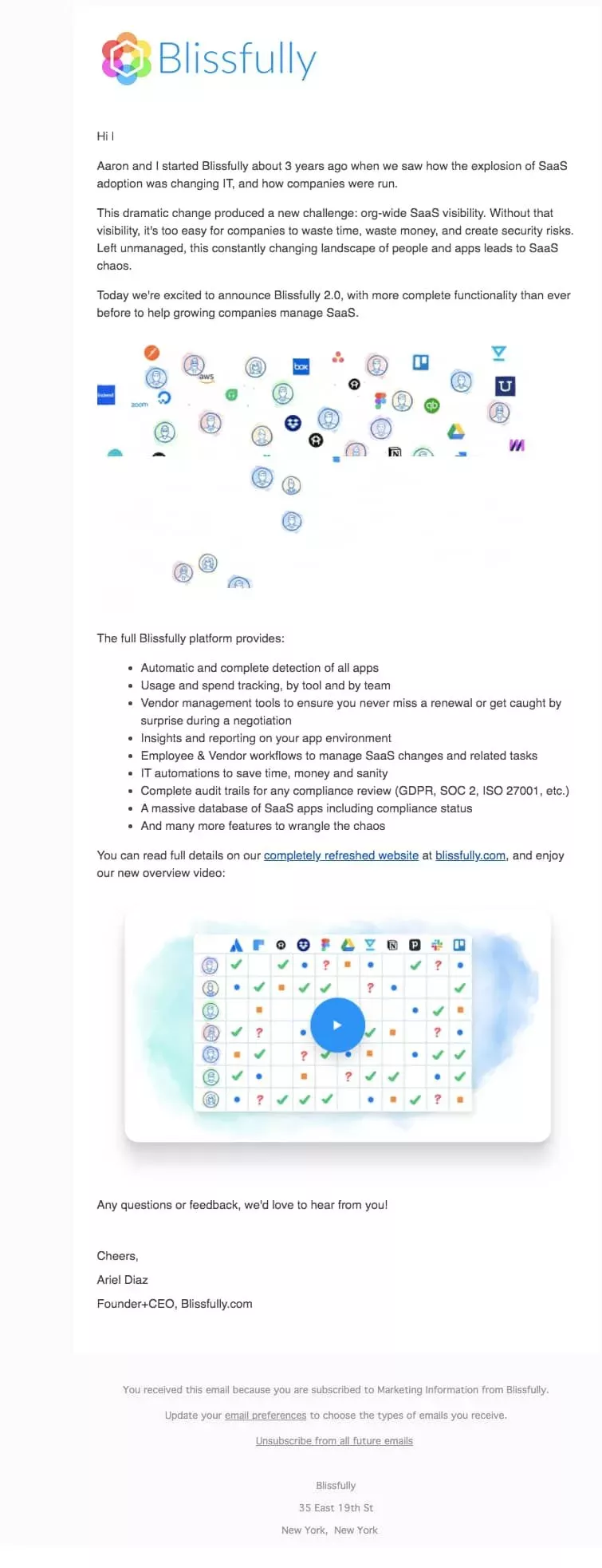
21. Asana
This upcoming feature announcement from Asana is another great example of a teaser email.
It informs users about new ways to organize their tasks, highlights key upcoming features, and sets the scene for the official release.
The email uses a simple, clean design with a preview image of the “My Tasks” board to spark curiosity.
It also acknowledges user feedback, starting with “You asked for more ways…” and then provides a brief list of features users can look forward to.
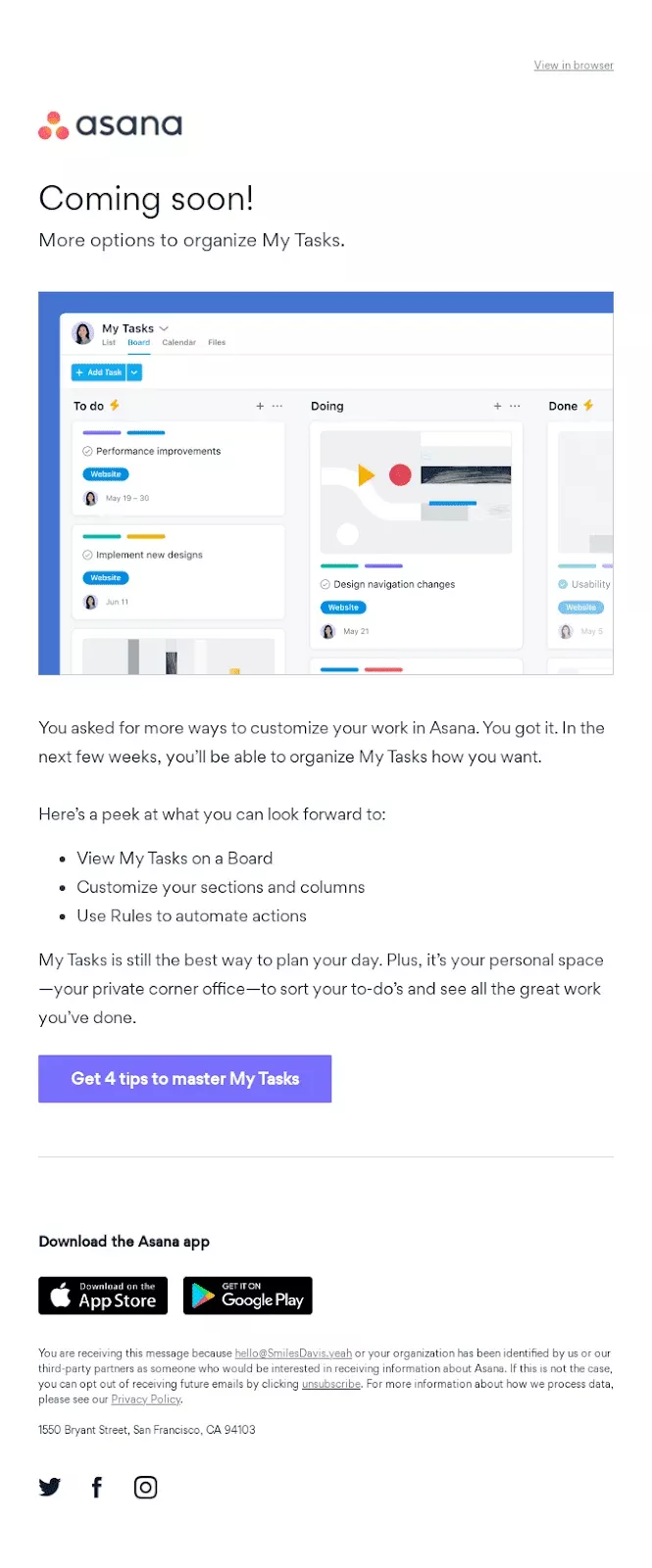
22. Trello
Trello’s feature launch email for Trello Inspiration uses engagement tactics to encourage user participation.
It starts by asking a question—”Wonder how others are using Trello?”—which immediately captivates the reader and invites curiosity.
The primary CTA, “Get Inspired,” leads users to explore the gallery of templates – giving them instant value.
That’s not all!
The email incorporates a secondary CTA encouraging users to share their own Trello experiences in exchange for Trello Gold, which promotes community-driven content and boosts feature adoption.
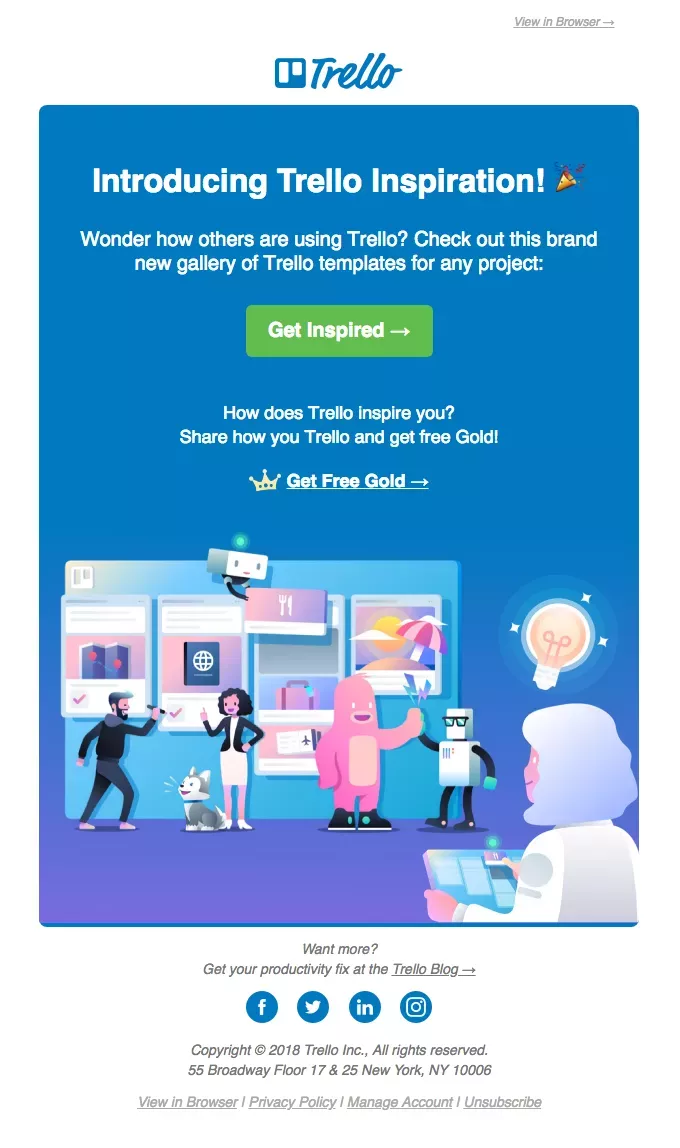
Best practices for creating a great product launch email campaign
There’s more to new product release emails than it may seem. To achieve their goals, they should be a part of a well-orchestrated campaign.
Here are a few best practices to help you.
Plan a sequence of product launch announcement emails
Don’t rely on a single email to deliver the message, as it can easily be missed. Instead, design a sequence of emails for different stages of the product launch campaign.
Consider sending:
- Beta launch invite: Invite a select group of users to take part in testing the product before the launch.
- Teaser email: Send this a couple of weeks before the release and let the users know that a new feature is coming soon (including the launch date) to build anticipation.
- Product launch announcement email: Send it with your product release notes and invite users to check it out.
- ‘In case you missed it’ email: Sending a reminder can help in case the user missed the first one (avoid spam and don’t send this to users who open the launch email).
Use segmentation to email the right users
Use the information about your users to segment them and deliver focused and relevant messages to the right target audience.
By now, you would have identified the groups of users who are going to benefit from the new feature and email just them.
Thanks to the Userpilot-HubSpot integration, you can leverage user behavior data and survey responses to create more detailed user segments. And seamlessly target them with HubSpot email campaigns.
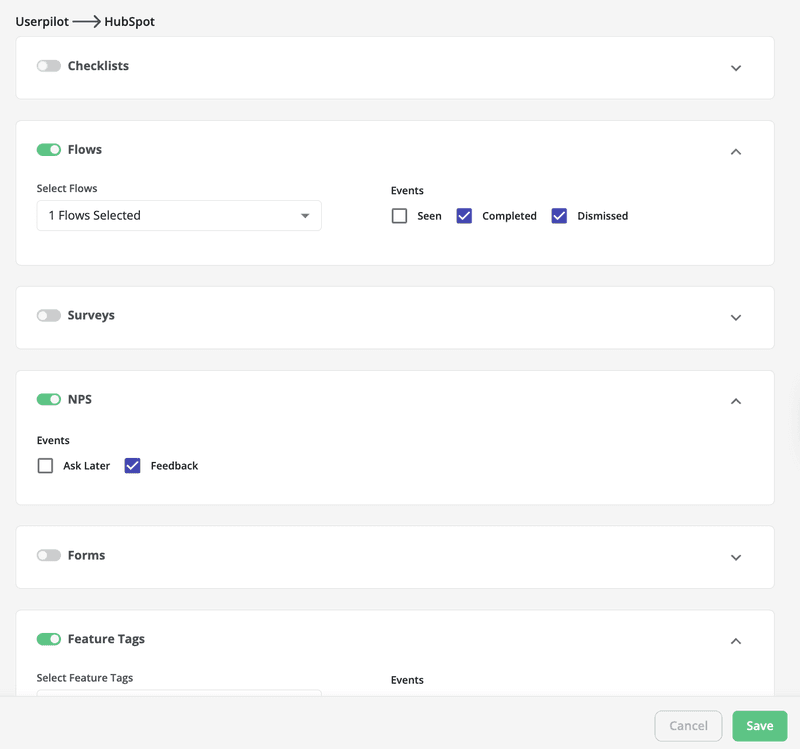
Use a template
A well-designed product launch email template can significantly streamline the process of creating your new product launch email sequence.
How?
Templates offer a structured approach that ensures key elements like branding, visuals, and messaging remain consistent across multiple emails.
Product launch email templates can also speed up the design process, allowing your team to focus on refining the content rather than building emails from scratch.
Make the release emails visually pleasing
A visually appealing product launch email grabs attention, encourages engagement, and keeps your readers interested.
How do you achieve it?
- Use a clean and intuitive layout.
- Include high-quality screenshots, gifs, and short video clips to showcase product value.
- Use headers, icons, and bullet points.
The goal is to make the email easy to scan and attractive to look at the same time.
Include compelling CTAs in your release emails
The main purpose of a launch email?
To drive user behavior.
And that’s why it needs a strong a strong call-to-action (CTA).
What makes a strong CTA?
Instead of a generic “Learn More” or “Click Here,” use CTAs that reflect the value or outcome for the user, like “Start Your Free Trial” or “Get Early Access.”
Whatever your strategy, make sure the CTA button stands out visually with contrasting colors or prominent placement in the email design.
Ensure consistency with the overall campaign
Your product launch emails should be an extension of your broader marketing campaign, not a standalone piece of communication.
Consistency in tone, messaging, visuals, and branding across all channels—including social media, your website, and blog posts—helps build a cohesive picture, which is essential to gaining customer trust.
Leverage email marketing software to analyze campaign performance and iterate
To maximize the success of your product launch email sequence, track and analyze key performance metrics.
Open rates, click-through rates (CTR), and conversion rates provide valuable insights into how well your emails are resonating. For instance, you might discover that certain subject lines perform better with specific segments of your audience, or that a particular CTA is driving higher conversions.
And it’s easy to do.
Many email marketing platforms like Mailchimp, ConvertKit, ActiveCampaign, or GetResponse offer built-in analytics features that allow you to segment your audience and conduct A/B tests.
Conclusion
New product release emails build anticipation around new products or features, showcase their advantages and benefits, and drive user engagement.
However, they’re just one medium in the launch campaign. To successfully drive product adoption, they need to be combined with effective user onboarding.
If you’d like to learn how Userpilot can help you create in-app onboarding experiences, book the demo!







